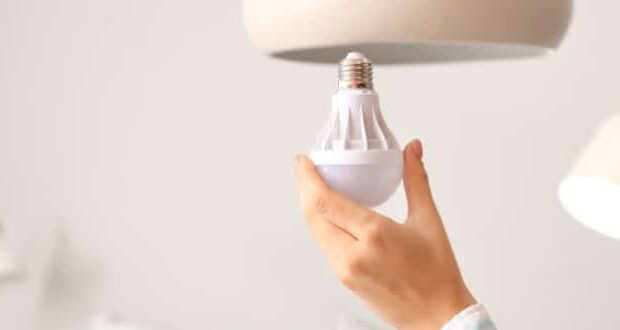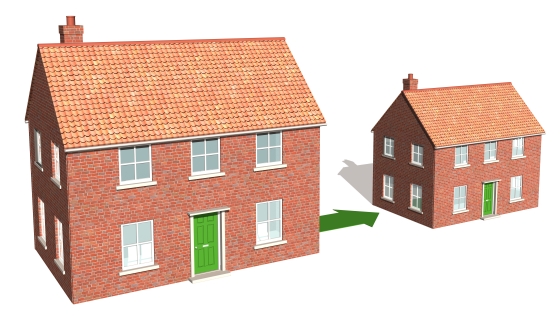If you have been shopping for light bulbs recently, you may feel confused by your choices. You may remember when it was easy to choose a simple 40-watt or 60-watt bulb that could fit almost any lamp or light fixture in the house.
Now, energy efficiency plays a big part in the production of light bulbs. Plus, the introduction of technologically advanced lighting makes decision-making even more complex. Seeing the light is a simple guide to lightbulbs, from safety lights to Edison bulbs, to help you shop for the proper lightbulbs for your home.
Light Bulb Types
Looking down the light bulb aisle at your local home improvement store may seem like an endless sea of light bulbs. However, there are six main types of light bulbs used in residential homes. The endless options fall within these six categories but come in different shapes, sizes, styles, colors, and brightness levels.
The six main types of light bulbs are:
- Incandescent: This is the original light bulb, but it’s not the most energy-efficient option. Due to the lack of energy efficiency of the incandescent light bulb, Congress passed an act in 2007 to promote more energy-efficient lighting. The act stopped the production of the once widely used incandescent bulb. Now, incandescent bulbs are still available in lower-wattage variations, including the trendy Edison bulbs.
- Standard fluorescent: recognizable by their long, tubular form. Often seen in stores, offices, or schools and less often in homes. However, in some older homes, fluorescent bulbs may be used in the kitchen overhead, garage, or basement.
- Compact fluorescent (CFL): These are smaller curved or twisted, tube-looking lightbulbs with a familiar base used in fixtures like regular incandescent light bulbs.
- Halogen: These bulbs emit light similar to natural light, making them a healthier option. Halogen bulbs become very hot, making them better for limited-use places such as outdoor floodlights.
- Light-emitting Diode (LED): the most energy-efficient bulb that requires little energy to work and can last almost ten years. LED bulbs typically do not become overheated, making them safe to use everywhere.
- Smart Bulbs: wifi-enabled lightbulbs that are usually constructed from LED bulbs.
Brightness
Watts, lumens, and brightness are all related. Most people refer to watts and count on that number to determine brightness. However, watts are only part of the equation. A watt measures the electricity used with a bulb, and lumens measure the brightness of the light emitted from the bulb.
For example, a 60W bulb implies the bulb will use 60 watts of electrical power and produces about 800 lumens of light. The terms watts and lumens are often used interchangeably when choosing a light bulb because, most often, a high-wattage bulb produces a higher number of lumens.
When buying LED bulbs to replace incandescent bulbs, you can choose the brightness using a lumens brightness scale. For example, a lumens brightness scale will show the incandescent bulb in watts with a comparable LED option allowing you to light your home at your desired brightness with LED lights.
Lightbulbs and Temperature
Have you ever touched a lightbulb and almost burned your hand? This could be due to overlamping and may lead to some serious dangers. Overlamping refers to using a light bulb with a wattage that is too high for an electrical fixture. When choosing bulbs for any fixture in your home, it is important to use manufacturer recommendations for bulb wattage.
Failing to use the proper wattage bulbs for fixtures can result in dangerous overheating or permanent damage to light fixtures. Most modern light fixtures have wattage ratings indicated. When using a light fixture that does not have a wattage recommendation, using a bulb 60 watts or lower is the best choice.
Modern Features
Traditional light bulbs with one feature: they were put into a socket and produced light at the flip of a switch. Modern light bulbs have several features beyond a one-switch, light-producing bulb.
- Dimming: Dimmable lights have been available for residential use since the early 1960s. Although not a brand-new feature, dimming lights are a more modern feature than traditional one-switch lights. Dimming LED and incandescent light bulbs are widely available and work with a dimming switch.
- Listening features: Wi-fi or Bluetooth-enabled light bulbs can be turned on, off, dimmed, or changed colors with a smartphone or speaker like Alexa.
- Wake up: These lightbulbs are sensitive to natural lighting. The sun rising and setting can turn on or off some outdoor lights.
- Motion Sensing: Motion-detecting light bulbs can turn on suddenly when detecting movement from people, cars, or wildlife.
Choosing the Best Bulb
Many choices are available when selecting the best bulb for fixtures. The type of lighting you choose will depend on the atmosphere, mood, and purpose of your lighting needs. The most energy-efficient light bulbs are LED lights. While they are the longest-lasting choice, LED bulbs may not be the best choice for every fixture.
When shopping for light bulbs, keep these things in mind:
- Bulb base, size, and shape: Not all light bulbs will fit in every fixture. Make sure you know what size and shape you need before you shop for light bulbs.
- Brightness needs: It is essential to determine how much light you need in the area you are purchasing light bulbs. Referencing a watt-to-lumen chart may help. Take note of maximum watt ratings for each fixture before buying light bulbs, and remember watts and lumens are different.
- Choose your desired color of white: White light bulbs may appear warm, yellow, or bright white. White hues from light bulbs are soft, warm, or daylight. Some may even appear as a cool blue. Reading the bulb packaging to ensure you purchase the color you desire is important.
- Dimming fixtures: Not all bulbs are dimmable. When purchasing a bulb for a dimming fixture, make sure you buy a dimmable bulb.
- Enclosed or recessed: Today, many residential homes have some recessed lighting or can lighting. Make sure the bulbs you choose for canned or recessed lighting are rated for use in that type of fixture. Enclosed or recessed bulbs heat up more than bulbs used in open fixtures.
- Energy Star Label: Always look for Energy Star-certified light bulbs because they are certified and tested to meet energy efficiency standards. Light bulbs with the Energy Star label will include brightness, color, lifespan, and energy use. This information can help you select the best light bulbs for your fixtures.
Choosing the right light bulbs for your lighting needs will vary depending on the space and lighting fixture. Cost, energy efficiency, and even decor will affect your decisions when choosing the right lighting for your spaces.
Here’s how to make your home look modern on a budget.






